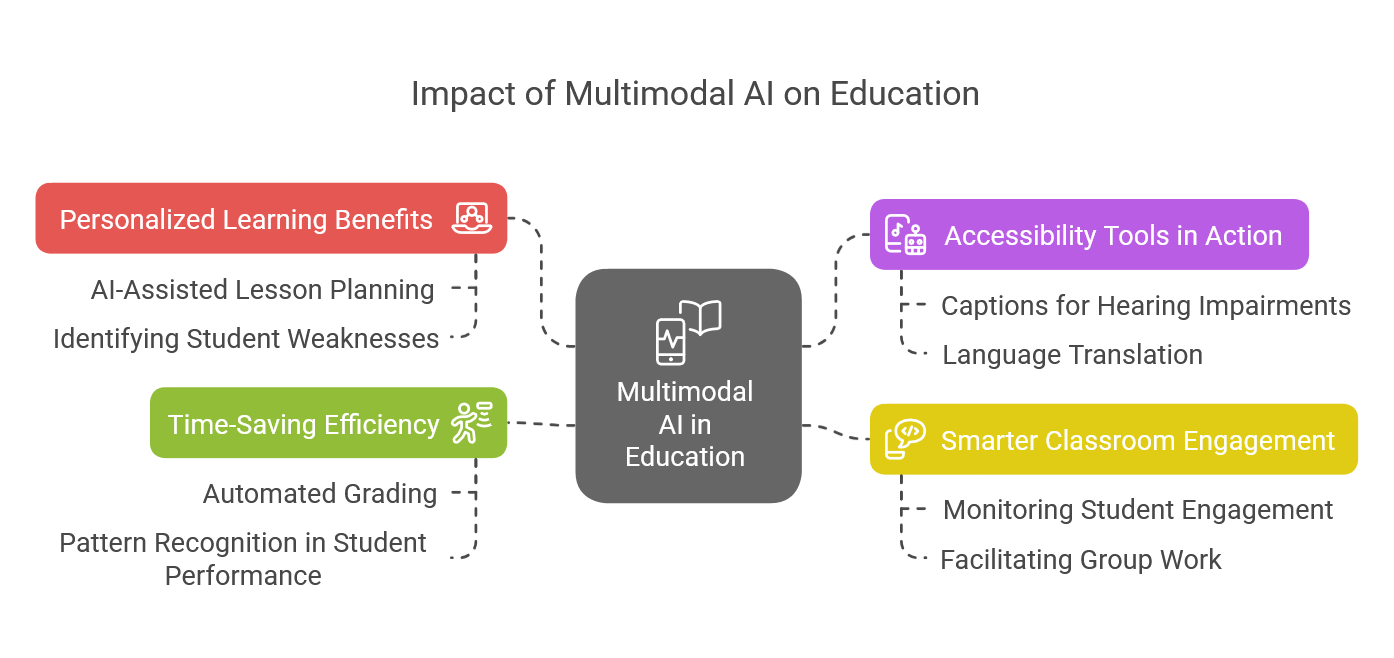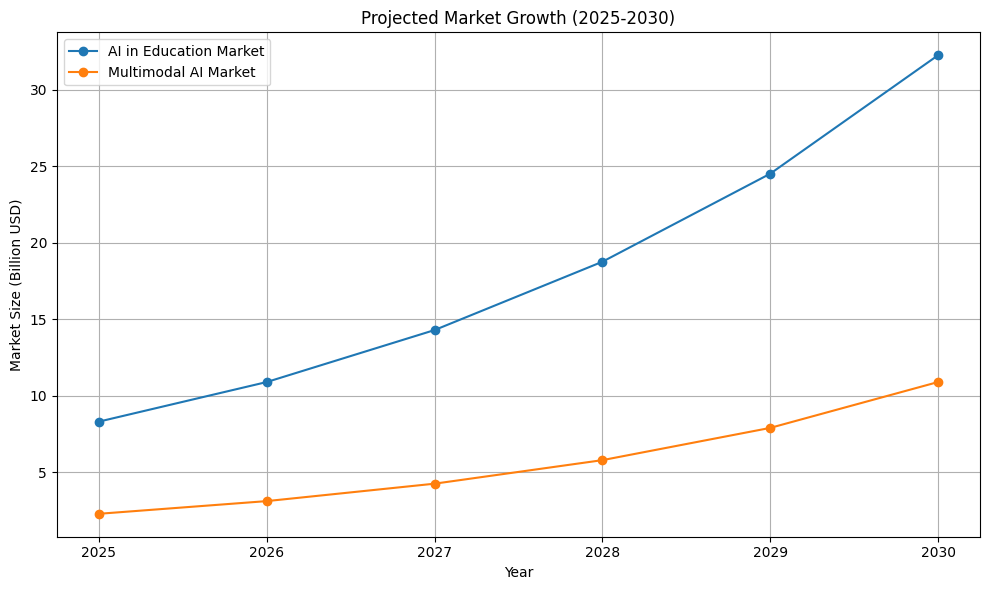
The Role of Multimodal AI in Education
Education in 2025 is at a pivotal moment. Teachers are facing burnout, students are struggling to keep up, and traditional teaching methods are falling short. Multimodal AI is emerging as a solution, leveraging text, audio, images, and video to create dynamic and adaptive learning experiences.
According to recent statistics, the global market for AI in education is thriving, with multimodal AI at the forefront. This technology is helping students master complex subjects and teachers save valuable time on administrative tasks. However, challenges such as privacy concerns, data control, and accessibility issues must be addressed.
Let’s explore how multimodal AI works, its practical applications, and the hurdles that need to be overcome.
How Multimodal AI Works in Schools
Multimodal AI combines various data types—text, speech, visuals—to better understand student needs. For example, OpenAI’s Sora can generate videos from text descriptions, such as a volcanic eruption for a science lesson, while Google’s Gemini processes text and images to offer detailed, multimodal responses.
In classrooms, this technology can read homework, listen to student questions, and adjust lessons in real time. If a student struggles with a concept, it might generate a video explanation or a visual diagram. This adaptability makes it a powerful tool for diverse learning styles, from visual learners to hands-on enthusiasts.
Even smaller schools are adopting these tools, demonstrating that this technology is not just for well-funded districts. Learn more about emerging AI technologies here.
Four Ways Multimodal AI Transforms Education
Here are some examples of how multimodal AI is making a tangible impact in classrooms:
1. Personalized Learning for Every Student
No two students learn alike. Multimodal AI analyzes writing, speech, and even sketches to create personalized lessons. A 2025 survey reveals 50% of teachers now rely on AI for lesson planning, according to Artsmart data.
2. Breaking Accessibility Barriers
Multimodal AI ensures education reaches everyone. It transcribes lessons for hearing-impaired students, translates content into multiple languages, and pairs visuals with text, as eSchool News reports.
3. Enhancing Classroom Dynamics
Imagine an AI that monitors student engagement through voice and facial cues. Early adopters report sharper focus and better participation in classrooms.
4. Streamlining Teacher Workloads
From grading essays to tracking attendance, multimodal AI is a lifesaver for overworked teachers. One school cut grading time in half, according to GetMagicBox insights.

Real-World Examples of Multimodal AI in Action
Here are additional examples of multimodal AI in educational settings:
Math Class: Students use AI-powered virtual tutors to solve complex equations step-by-step. The tutors provide immediate feedback and hints, helping students understand mathematical concepts more deeply.
Art Class: AI tools assist students in creating digital art by suggesting color palettes, brush techniques, and even generating initial sketches based on descriptions, enhancing creativity and learning.
Special Education: AI applications help students with special needs by providing personalized learning experiences. For instance, text-to-speech tools read out loud for visually impaired students, while interactive games improve motor skills and cognitive functions.
Physical Education: AI-driven fitness apps guide students through exercises, providing real-time feedback on form and technique, making PE classes more engaging and effective.
Geography Class: Students explore different regions using AI-enhanced virtual reality tours, allowing them to “visit” and learn about various landscapes, cultures, and environmental issues interactively.
These examples further illustrate how multimodal AI can enhance learning experiences by making them more interactive, personalized, and engaging, addressing diverse educational needs and challenges.
Challenges of Multimodal AI in Education
While multimodal AI holds great promise for enhancing educational experiences, it also presents several challenges that need to be addressed to ensure its effective and equitable implementation. Understanding and mitigating these obstacles is crucial for maximizing the benefits of multimodal AI in education while minimizing potential risks.
Privacy Concerns
Multimodal AI collects vast amounts of student data—voices, videos, and work samples. Schools must implement robust data protection measures to prevent leaks, as highlighted in this tech analysis.
Equity and Fairness
AI systems trained on biased data can disadvantage certain students. For example, accents or darker skin tones might be misinterpreted, as noted by Edscoop.
Access Inequality
Not all schools can afford these tools. Funding and partnerships are crucial to ensure equitable access, as discussed in Campus Technology.
The Future of Multimodal AI in Learning
By 2026, multimodal AI could integrate with virtual reality, allowing students to “visit” historical sites or explore ecosystems in immersive detail. The market is projected to hit $207 billion by 2030, with schools leading the charge, according to Grand View Research.

Looking further ahead, this technology could become a lifelong learning companion, adapting to individual needs from childhood through adulthood.
Five Steps to Implement Multimodal AI in Your School
- Test Free Tools: Start with free AI tools like caption makers or video generators.
- Pilot Adaptive Systems: Try AI systems that adjust lessons based on student performance.
- Train Teachers: Provide simple AI training courses for educators.
- Seek Funding: Apply for grants or partner with local organizations to fund AI initiatives.
- Engage Parents: Share success stories to build community support.
For more examples, check out AI Transforming Education.
Conclusion
Multimodal AI is revolutionizing education in 2025, making learning more personalized, accessible, and efficient. But to fully realize its potential, we must address privacy concerns, ensure fairness, and bridge access gaps. If we get it right, this technology could level the playing field for students everywhere—urban or rural, rich or poor. The future of education is here, and it’s multimodal.
